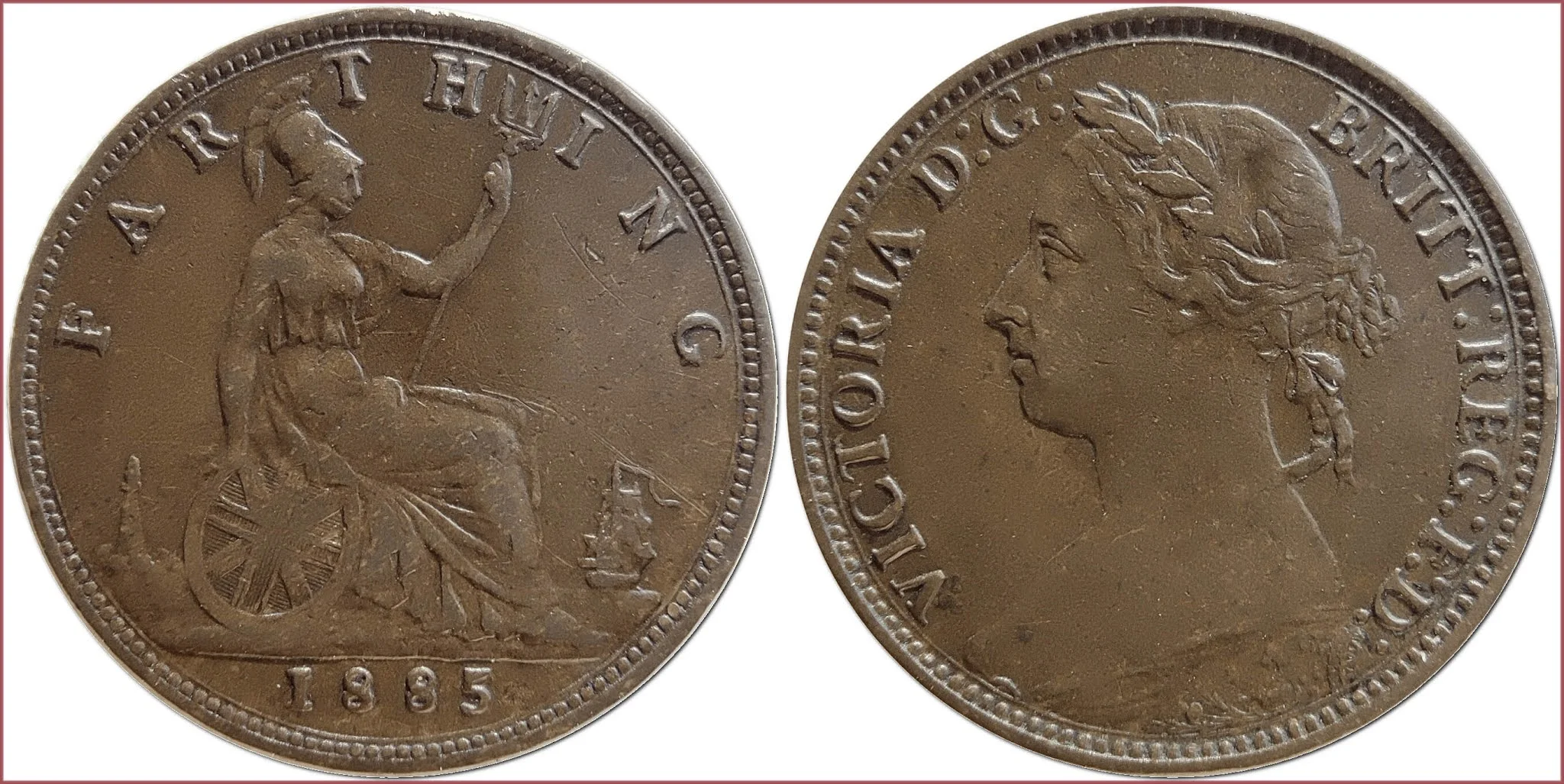FARTHING: COIN OF UNITED KINGDOM
Farthing, 1885: United Kingdom
Ruler: Victoria — Queen of the United Kingdom of Great Britain and Ireland.
FARTHING. 1885.
Seated Britannia: the national personification of Britain as a helmeted female warrior holding a trident and shield (with Union flag / Union Jack). In the distance at sea — a ship (sailboat).
VICTORIA D: G: BRITT: REG: F: D: (Victoria Dei Gratia Britanniar Regina Fidei Defensor): Victoria by the Grace of God Queen of the Britains Defender of the Faith.
Portrait of Queen Victoria (so-called, BUN HEAD PORTRAIT).
Coin design: Leonard Charles Wyon — British engraver of the Victorian era.
Mintage: 5.442.300.
Royal Mint, London (without mintmark).
- Bronze: 20 mm - 2.8 g
- Reference price: 6$
COIN FARTHING — WHERE & WHEN (coins catalog: by names & emitents)
- UNITED KINGDOM (13th-20th centuries): farthing = 1/4 penny = 1/960 pound
- IRELAND (17th-20th centuries): farthing (feoirling) = 1/4 penny (pingin) = 1/960 pound (punt)
- ISLE OF MAN (1839-1864): farthing = 1/4 penny = 1/960 pound
- JAMAICA (1880-1952): farthing = 1/4 penny = 1/960 pound
The name of the farthing coin comes from the word "fēorðing" (from "fēorða"), which translated from Old English (Anglo-Saxon) means the fourth part. In this case, we are talking about a quarter of a penny. It is interesting to use the term to denote the early types of bicycles — Penny-farthing. This is what the British called the first bicycles, in which the front wheel was much larger than the rear: similar to the ratio of the diameters of pence and farthing coins.











